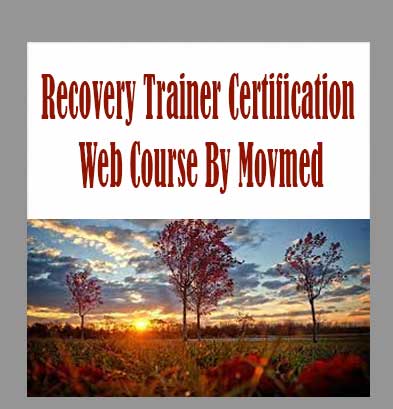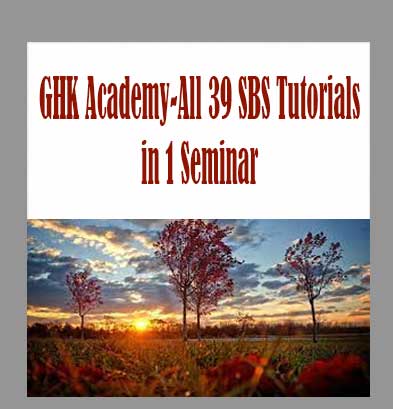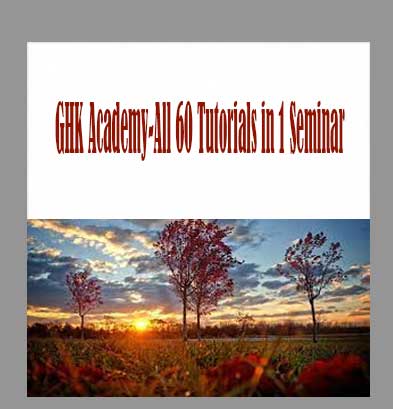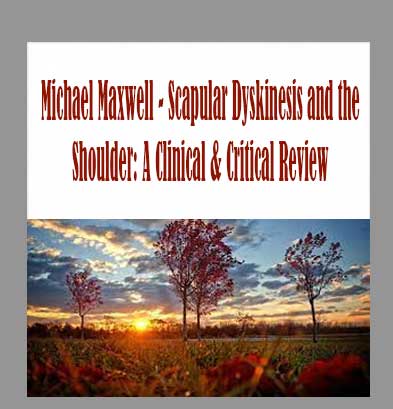Description
Assessing & Treating Today’s Athletes: Get Faster Results with Evidence-based Protocols for the Injuries You See Most – Darrell Locket download , Assessing & Treating Today’s Athletes: Get Faster Results with Evidence-based Protocols for the Injuries You See Most – Darrell Locket review , Assessing & Treating Today’s Athletes: Get Faster Results with Evidence-based Protocols for the Injuries You See Most – Darrell Locket free
Assessing & Treating Today’s Athletes: Get Faster Results with Evidence-based Protocols for the Injuries You See Most – Darrell Locket
Whether they’re wrecking themselves in CrossFit® or football, record numbers of weekend warriors are cropping up with the sports injuries of professional athletes. That means business is booming for rehab professionals like you. However, with more athletes skipping physicians than ever before, you’ve got to be confident in your assessment skills if you hope to treat symptoms at their source. If your caseload has stalled during this busy time with patients who aren’t making much progress, now’s the time to reevaluate your evaluations.
This hands-on program will take your sports medicine team to the next level, equipping you with evidence-based, multidisciplinary protocols for the athletic injuries you see most. From IT bands to impinged rotator cuffs, this course provides efficient clinical pathways for each member of your team, eliminating the guesswork from assessment, evaluation, treatment, and rehabilitation. With plenty of practice throughout the day, you’ll quickly grasp the “why,” “what,” and “how” of common conditions like acute/chronic inflammation, microtrauma, neuromuscular imbalances, and joint instability. The effective interventions you’ll try out in class will feel like second nature by the time you return to work.
Finally, explore the unique biomechanical demands of common sports and fitness activities and take home injury prevention methods and conditioning techniques that keep your clients doing what they love, whether they’re swinging golf clubs or kettlebells.
- Analyze the anatomy, mechanics, and pathology of common sports injuries, reviewing differences in injuries seen in youth, adults, and other groups
- Compare assessment techniques for connective tissue injuries such as muscle, tendon, and ligament
- Identify orthopedic stress test techniques and methodologies for the upper and lower extremity
- Review evaluation techniques for abnormal biomechanics of gait and abnormal physiology of the kinetic chain
- Design preventive and reconditioning regimens that reduce the likelihood of injury for upper and lower extremity
- Integrate multidisciplinary clinical protocols for common sports injuries, covering assessment, evaluation, treatment, and rehabilitation
Sports Medicine Team Practitioner Approach to Treatment of Sports Injuries
- Treatment of the injury: Non-operative and operative (types of surgery)
- Healing phases and rehabilitation
- Lab: Comprehensive sports injury physical examination
- Lab: Gait, posture, and functional kinetic chain assessment
LAB: Physical Examination of the Ankle & Lower Leg
- Preventive measures, mechanics of injuries, inspection of gait, range of motion, manual muscle testing, and special stress tests
- Pes anserinus bursitis or tendonitis
- Shin splint or medial tibial stress syndrome
- Posterior tibial tendon dysfunction
- Achilles tear, strain, bursitis, tendonitis, or tenosynovitis
- Gastrocnemius and soleus strain
- Retrocalcaneal bursitis or Sever’s syndrome
- Lateral and medial ankle sprain
- Syndesmotic injuries (high ankle sprain)
- Tarsal tunnel
- Interdigital (Morton’s) neuroma
- Plantar fasciitis
- Peroneal tendon subluxation
- Jones fracture
- Stress fracture
- Avulsion fractures
LAB: Physical Examination of the Knee, Hip, & Thigh
- Preventive measures, inspection of gait, squats, lunges, range of motion, mechanics of injuries, palpation, and special stress tests
- Ligament injuries
- Anterior and posterior cruciate
- Medial and lateral collateral
- Cartilage injuries
- Meniscal tears
- Articular
- Degenerative joint disease
- Ligament injuries
- Patellafemoral injuries
- Chondromalacia
- Malalignment and instability
- Tendonitis or Osgood-Schlatter
- Degenerative joint disease
- Muscle injuries
- Gluteus maximus weakness
- Gluteus medius and minimus weakness
- Tensor fascia lata weakness
- Quadriceps femoris and hamstring strain/tendonitis/ruptures
- Hip injuries
- Hip impingement
- Trochanteric bursitis
- Adductor strain
- Iliotibial band friction syndrome
LAB: Physical Examination of the Shoulder & Arm Injuries
- Preventive measures, inspection posture, functional movement, mechanics of injuries, range of motion, palpation, and special stress tests
- Glenohumeral instability, anterior or posterior joint
- Rotator cuff strain, impingement or tendonitis
- Pectoralis strain
- Acromioclavicular joint sprain
- Brachial plexus (burner/stinger)
- SLAP lesion
- Bicipital tenosynovitis/subluxation
- Triceps and biceps strain
- Bursitis of elbow
- Lateral and medial epicondylitis of the elbow
LAB: Physical Examination of the Back Injuries
- Preventive measures, inspection gait, posture, functional kinetic chain assessment, mechanics of injuries, range of motion, palpation, and special stress tests
- Piriformis syndrome and sciatica
- Erector spinae muscle strain
- Sacroiliac sprain
- Acute and chronic low back pain
- Lumbar spinal stenosis
LAB: Physical Examination of the Wrist, & Hand Anatomy
- Preventive measures, inspection posture, mechanics of injuries, range of motion, palpation, and special stress tests
- Trifibrocartilage (TFC)
- DeQuervain’s
- Hand and fingers fracture/other conditions
- Gamekeeper’s thumb
Frequently Asked Questions:
- Innovative Business Model:
- Embrace the reality of a genuine business! Our approach involves forming a group buy, where we collectively share the costs among members. Using these funds, we purchase sought-after courses from sale pages and make them accessible to individuals facing financial constraints. Despite potential reservations from the authors, our customers appreciate the affordability and accessibility we provide.
- The Legal Landscape: Yes and No:
- The legality of our operations falls into a gray area. While we lack explicit approval from the course authors for resale, there’s a technicality at play. When procuring the course, the author didn’t specify any restrictions on resale. This legal nuance presents both an opportunity for us and a boon for those seeking budget-friendly access.
- Quality Assurance: Unveiling the Real Deal:
- Delving into the heart of the matter – quality. Acquiring the course directly from the sale page ensures that all documents and materials are identical to those obtained through conventional means. However, our differentiator lies in going beyond personal study; we take an extra step by reselling. It’s important to note that we are not the official course providers, meaning certain premium services aren’t included in our package:
- No coaching calls or scheduled sessions with the author.
- No access to the author’s private Facebook group or web portal.
- No entry to the author’s exclusive membership forum.
- No direct email support from the author or their team.
We operate independently, aiming to bridge the affordability gap without the additional services offered by official course channels. Your understanding of our unique approach is greatly appreciated.
- Delving into the heart of the matter – quality. Acquiring the course directly from the sale page ensures that all documents and materials are identical to those obtained through conventional means. However, our differentiator lies in going beyond personal study; we take an extra step by reselling. It’s important to note that we are not the official course providers, meaning certain premium services aren’t included in our package:
Refund is acceptable:
- Firstly, item is not as explained
- Secondly, Item do not work the way it should.
- Thirdly, and most importantly, support extension can not be used.
Thank you for choosing us! We’re so happy that you feel comfortable enough with us to forward your business here.
- Innovative Business Model:








Reviews
There are no reviews yet.